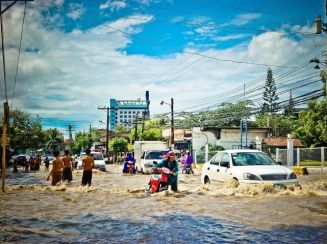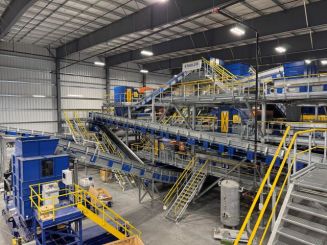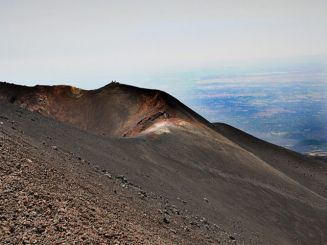Dismantling and recycling of the Costa Concordia wreck
The project chosen for dismantling and recycling the Costa Concordia wreck will be carried out in four distinct phases, which are expected to last for a total of 22 months.
The plan is focused on delivering a successful outcome while minimizing the impact on the environment and human resources involved, putting in place continuous monitoring activities and containment of environmental impact. Throughout operations, expert technical personnel, with experience in environmental protection, executing recovery plans and waste management, will monitor the progress of this priority. Furthermore, all areas of the shipyard will be equipped with pollution containment systems.
The dismantling process will ensure that the various materials are separated as much as possible in order to minimise subsequent handling operations. The process will rely on using technical personnel with consolidated experience in ship engineering projects and dismantling activities. In compliance with current European and National waste management regulations, around 80% of the waste will be disposed of and recycled in the areas closest to the Port of Genoa, limiting the impact on the local environment.
- PHASE 1: Preparations made at Genoa’s Voltri Port for receiving the wreck, where it will be lightened. Planned activities include stripping the interior furnishings and fittings of the surfaced decks. This will create a sufficient draught to enable the salvaged vessel to be towed to the ship repairs area in the “Molo Ex Superbacino” without the need for dredging operations. The site at Voltri Port will consist of two operational areas: the "Seawall" pier, to be used for mooring the wreck and for the lightening operations; and the pier at the top of “Voltri Dock”, which will provide a working area for managing logistics and waste management. The lightening operations will begin with the highest deck (n°14), and will proceed one deck at a time. These operations will be concluded when the wreck has a draught of around 15 metres, allowing it to enter the “Molo Ex Superbacino” dock.
- PHASE 2: The wreck will then be transferred from the Voltri “Seawall” to the “Molo Ex Superbacino”, where the structures of decks n°14 to n°2 will be dismantled, including the removal of interior furnishings and fittings of the decks which emerge as the work progresses. The deck structures will be dismantled in a manner to avoid jeopardising the stability and longitudinal resistance of the wreck. For this, the wreck will be divided into three operational sub-areas (bow, stern and centre) and two decks will be removed simultaneously for each sub-area.
- PHASE 3: Performance of preparatory activities for transfer of the wreck to Dry Dock n° 4. This phase is concerned with the creation of areas of buoyancy inside the wreck, through the installation of suitable air pockets and by making several compartments watertight. This will allow the subsequent removal of the sponsons which will be performed using appropriate procedures. A plan is also in place to clean the galleys and refrigerated rooms on deck n°0. Once these operations are completed, the wreck will be towed into Dry Dock n°4.
- PHASE 4: Performance of all operations to be carried out in a segregated and dry area of Dry Dock n°4, up to dismantling the wreck. Dry Dock n°5 will be used to guarantee correct water management and for treating any waste water. The removal of interior fittings, cleaning of various areas and the final demolition of all remaining structures will be carried out in Dry Dock n°4. Phase 4 will conclude with materials management, and the transportation and disposal/recycling of the demolition materials.
Environmental protection measures
The overriding priority of the plan is ensuring the safety of all concerned, and minimising any environmental impact through the use of cutting-edge environmental protection measures. Air, noise, sea water and sediment levels will be continually monitored during the dismantling and recycling activities, while an initial analysis will ascertain the current state of the sites involved. Air monitoring will be particularly important during the mechanical demolition work. Air quality control panels will therefore be installed at several monitoring stations, the location of which will be decided on in due course with the relevant authorities. An acoustic measurement programme will be performed for noise monitoring, by installing receptors near the working areas and the areas of the city adjacent to the shipyard. During activities performed while the wreck is moored at the pier, seawater and marine sediments will also be monitored to check for the presence of any contaminants.
Containment barriers
A containment barrier will be installed around the wreck before operations commence both at the Seawall of Voltri Port and at the Molo Ex Superbacino. This type of barrier is designed to limit and contain the diffusion of any discharges. The barrier is formed in two parts: one floating part, for containing foams, oils and other surface-floating substances; and a further submerged section, going down to the seafloor, which contains any substances spreading underwater as much as possible.
In order to avoid low water oxygenation inside the barriers, a water oxygenation system (using atmospheric air) will be installed and will operate during the phases to lighten and dismantle the wreck.
Underwater assistance service
Divers possessing all the necessary requirements will be on hand at both the Genoa Voltri site and at the Molo Ex Superbacino. ROV (remotely operated underwater vehicles) designed and constructed by Saipem will also be used as required. “Oil Spill Response” Rapid Response Unit Multi-disciplinary rapid response units specialising in fire prevention and environmental response activities will be present 24/7 to guarantee immediate assistance if required (e.g. removal of any spills).
Gas emission reduction systems
The localised use of active carbon filter gas emission reduction systems is planned in the working areas. The micro-porous structures of the filters will allow the capture of any VOC (volatile organic compounds) and any corrosive and odorous molecules released during the cleaning and emptying of the refrigerated rooms and storerooms.
Deodorising system
A deodorising nebuliser system will be used to keep bad odours to a minimum. This system can guarantee effectiveness for dozens of metres.
Dry dock industrial water treatment system Genoa Port has an industrial water treatment system, which is directly connected to Dry Docks n°4 and n°5 (Permit no. 5341/10 – issued by the Genoa Provincial Authority). This system will be used during Phase 4 of the dismantling activities and is formed of two lines with a treatment capacity of 350 m3/hour. The system is divided into oil separation, reactive dosing, sedimentation and filtering phases.












